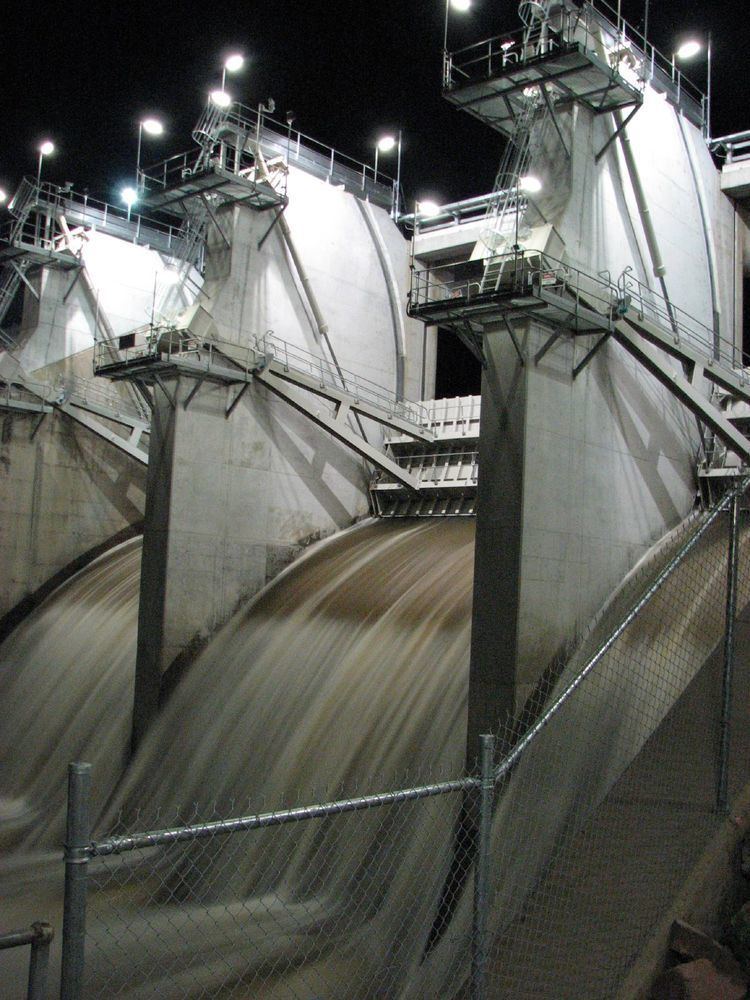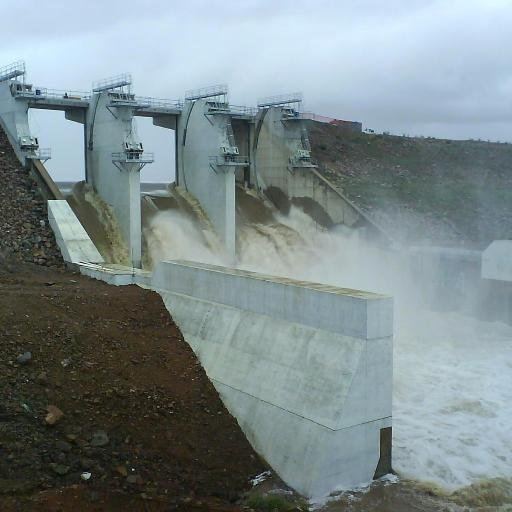Country Australia Opening date 1971 Catchment area 750 km² | Status Operational Catchment area 750 km² Height 34 m Impound Ross River | |
 | ||
Similar Burdekin Dam, Mount Crosby Weir, Wuruma Dam, Theresa Creek Dam, Leslie Harrison Dam | ||
Aerial view of ross river dam december 2016
The Ross River Dam is a rock and eathfill-filled embankment dam across the Ross River, located in Townsville in northern Queensland, Australia. Built initially for flood control, the impoundment created by the dam serves as one of the major potable water supplies for the region.
Contents
- Aerial view of ross river dam december 2016
- Ross river dam townsville
- Location and features
- Upgrade of the dam wall
- References

Ross river dam townsville
Location and features

The dam was constructed by Leighton Holdings in 1971 for the purposes of flood mitigation and water storage. Following a 2007 upgrade of facilities, the dam has a capacity of 250,000 megalitres (8,800×10^6 cu ft) and an earth rock embankment 8.67 kilometres (5.39 mi) in length and 34.4 metres (113 ft) high. The reservoir has a catchment area of 750 square kilometres (290 sq mi) with an controlled gated spillway. The reservoir has a current capacity of 233,187 megalitres (5.1294×1010 imp gal; 6.1601×1010 US gal) of water; and can hold up to 803,565 megalitres (1.76760×1011 imp gal; 2.12279×1011 US gal) of water in flood mitigation. When the dam gates open, water spills over into the Ross River. Visitors may view the dam from a viewing platform at Ross Park. The Ross Dam Pump Station supplies up to 232 megalitres (8.2×10^6 cu ft) of water to the Douglas Water Treatment Plant, where the water undergoes aeration, sedimentation, rapid sand filtration and chlorination treatment before being pumped to the reservoir where the water is distributed to Townsville.

At the base of the dam and on the banks of the Ross River is Ross Park, part of Riverway, with facilities for picnics or barbecues, as well as public toilets at this location.
Upgrade of the dam wall


The spillway gates have increased the dam's capacity by around nine percent, which is about 21,000 megalitres (740×10^6 cu ft) or four months extra supply of water. Three spillway gates span the 40-metre (130 ft) wide spillway. The upgrade was going to take until mid-2008 to complete unless rainfall delays construction, however it was completed ahead of time in late 2007. The cost was around A$115 million.
The dam's storage was temporarily reduced with the lowering of the spillway to make way for the new floodgates that have now been fitted.
Water is supplied to surrounding areas by releasing water from the Burdekin Dam spillway into the Burdekin and Haughton Rivers. Weirs control the volume of water entering each river. The Haughton pumping station supplies water via a low pressure pipeline to Ross River Dam. The pipeline was built in 1988 by the Townsville Council. During the first decade the PVC sections of the pipeline repeatedly ruptured.
